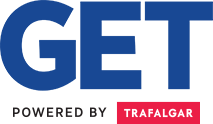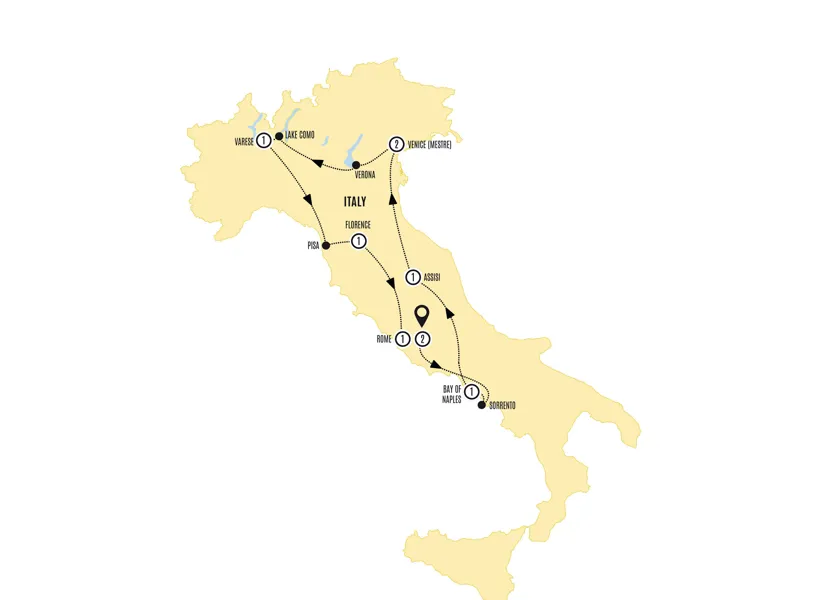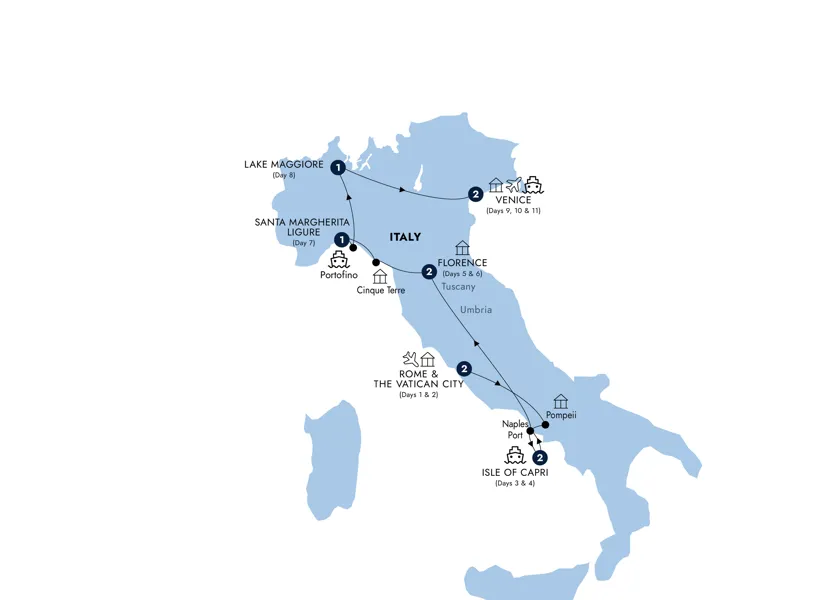
Call Us
Mon - Fri: 6:30am - 5:30pm PST
Closed Sat & Sun
Christmas Day: Closed Thursday December 25

Call Us
Mon - Fri: 6:30am - 5:30pm PST
Closed Sat & Sun
Christmas Day: Closed Thursday December 25
About Us
For more than 50 years, Grand European Travel has been providing a wonderfully simple, and genuinely personal, way to travel.
Meet Our Team
Our Travel Specialists make planning your trip fun and hassle free
Guided Vacations
Top 10 advantages of taking a guided tour
Guest Reviews
As you plan your trip, read our unedited guest reviews
Travel Insurance
Protect your vacation with travel insurance.
Responsible Travel
Powered by our not-for-profit foundation, TreadRight
Current Offers
From Last Minute Deals to limited time promotions, see all offers.
Big Travel Sale
SAVE up to 15% on 2026 Tours
Double Past Traveler
Double Global Tour Rewards on select trips
GETAWAY Deals
Great deals on last minute travel
AARP Member Benefits
Enjoy exclusive savings on guided tours and river cruises
2027 Cruise Savings
Early Booking Savings up to 20%
Solo Traveler Deals
2026 Single Supplement Cruise Discounts
The Delightful World of Gelato:
Fun Facts You Didn’t Know
Fun Facts You Didn’t Know

The History of Gelato
Ancient Origins
Gelato's history traces back to ancient civilizations. It is believed that the Chinese were among the first to create a precursor to gelato, using a mixture of snow, rice, and milk. The ancient Romans and Egyptians also enjoyed frozen desserts made from snow and fruit juices. These early versions set the stage for the gelato we know today.
Renaissance Revival
The true renaissance of gelato began in Italy during the Renaissance period. In the 16th century, Bernardo Buontalenti, a Florentine artist, is often credited with creating the first gelato. He developed a recipe combining milk, honey, and egg yolk, which became a sensation at the court of the Medici family. This innovation spread throughout Europe, becoming a beloved treat.

The Art of Gelato Making
Traditional Techniques
Traditional gelato is made using simple, natural ingredients: milk, sugar, and fresh fruits or other flavorings. The key to its creamy texture is the slow churning process, which incorporates less air compared to ice cream. This results in a denser, richer product. Artisanal gelato makers often use fresh, local ingredients to create their flavors, ensuring high quality and taste.
Modern Innovations
Modern gelato makers continue to innovate while respecting traditional methods. New techniques and equipment have made the process more efficient, allowing for a broader range of flavors and textures. Innovations such as dairy-free and low-sugar options have also expanded gelato's appeal to a wider audience, accommodating dietary preferences and health-conscious consumers.
Gelato vs. Ice Cream
Key Differences
While gelato and ice cream may seem similar, there are key differences. Gelato has a lower fat content, as it is typically made with more milk than cream. It is also churned at a slower speed, resulting in a denser, creamier texture with less air. Ice cream, on the other hand, contains more fat and is churned faster, incorporating more air and creating a lighter texture.

Popular Gelato Flavors Around the World
Classic Favorites
Some gelato flavors have stood the test of time. Classics like vanilla, chocolate, and pistachio remain popular due to their rich, comforting tastes. Stracciatella is another beloved choice, offering a delightful contrast of textures.
What is Stracciatella? One of Our Favorite Gelato Flavors...
Stracciatella is a popular flavor of gelato that originates from Italy. The name "stracciatella" comes from the Italian word "stracciare," which means "to shred" or "to tear." The flavor is characterized by fine shavings or chunks of chocolate that are mixed into a creamy, vanilla-flavored base. The result is a delightful combination of smooth, creamy gelato with a pleasant crunch from the chocolate pieces. Stracciatella gelato is often compared to chocolate chip ice cream. But, with Stracciatella, the chocolate is typically more evenly distributed throughout, giving it a distinct texture and taste.
Unique Regional Flavors
Gelato makers around the world have embraced local ingredients and traditions to create unique flavors. In Italy, flavors like limoncello and tiramisu reflect the country’s culinary heritage. Japan's makers offer matcha and black sesame gelato, while a shop in Peru might feature flavors like avocado and chili. These regional variations showcase the versatility of gelato and its ability to adapt to different tastes and cultures.
Visit Italy & Try Gelato at the Source!
Northern Italy Including Cinque Terre
Day 1
Welcome to MilanDay 2
Discover Fashionable MilanDay 3
Journey to ParmaDay 4
Admire the delights of ParmaDay 5
Admire Colorful Cinque TerreDay 6
Onwards from the Italian Riviera to Lake MaggioreDay 7
Lake Maggiore Your WayDay 8
Farewell Italy
Great Italian Cities
Day 1
Welcome to RomeDay 2
Explore Ancient Rome and the Vatican CityDay 3
Rome Your WayDay 4
Admire Assisi and on to FlorenceDay 5
Discover Renaissance FlorenceDay 6
Uncover Pisa’s TreasuresDay 7
Journey to Bologna and VeniceDay 8
Cruise Venice’s CanalsDay 9
Experience Daily Life in VeniceDay 10
Farewell Venice
Best of Italy
Day 1
Welcome to RomeDay 2
Discover Ancient Rome and the Vatican CityDay 3
Explore the Ruins of Pompeii and SorrentoDay 4
Cruise to the Isle of CapriDay 5
Onwards to AssisiDay 6
Discover Verona and on to VeniceDay 7
St. Mark's and More in VeniceDay 8
Stroll around Milan and on to VareseDay 9
Enjoy a Visit to Como - VareseDay 10
Admire Pisa and on to FlorenceDay 11
Experience Art and Architecture in FlorenceDay 12
Treasures of San Gimignano and Return to RomeDay 13
Farewell Rome
Southern Italy and Sicily
Day 1
Welcome to RomeDay 2
Explore the Ruins of Pompeii and SorrentoDay 3
Cruise to the Isle of CapriDay 4
Cross the Strait to SicilyDay 5
Gardens and More in TaorminaDay 6
Taormina Riviera Your WayDay 7
Journey to Ancient AgrigentoDay 8
Explore Erice and on to PalermoDay 9
Enjoy the Views in MonrealeDay 10
Journey Home
Italian Intermezzo
Day 1
Lively MilanDay 2
Venice, the Queen of the AdriaticDay 3
Venice and the Magic of La SerenissimaDay 4
Tranquil Tuscany, Pisa and FlorenceDay 5
Free Time in Renaissance FlorenceDay 6
Chianti Country to Orvieto and on to RomeDay 7
Rome Sightseeing and the VaticanDay 8
Arrivederci Roma
Italian Holiday
Day 1
Ciao RomeDay 2
Explore Ancient Rome and the Vatican CityDay 3
Journey to the Floating City of VeniceDay 4
Onwards to VeronaDay 5
Admire Pisa and on to FlorenceDay 6
All Roads Lead to RomeDay 7
Farewell Rome
Italian Glory
Day 1
Journey to the Italian LakesDay 2
Discover Fashionable Milan and ComoDay 3
Venture to Verona and VeniceDay 4
Explore the Floating CityDay 5
Onwards to FlorenceDay 6
Ponte Vecchio and More in FlorenceDay 7
Off to the Sunny Amalfi CoastDay 8
Uncover the Treasures of AmalfiDay 9
Amalfi Coast Your WayDay 10
The Ruins of Pompeii and on to RomeDay 11
Experience Ancient Rome and the Vatican CityDay 12
Rome Your WayDay 13
Arrivederci Italy
Italian Escapade
Day 1
Welcome to the Eternal City of RomeDay 2
Vatican City and Rome with a LocalDay 3
Siena and Medieval FlorenceDay 4
Florence, Birthplace of the RenaissanceDay 5
Pisa and the Italian LakesDay 6
The Italian Lake DistrictDay 7
To Venice With Wine Along the WayDay 8
The Magic of La SerenissimaDay 9
Hilltop AssisiDay 10
Sorrento on the coastDay 11
Capri, the Isle of DreamsDay 12
On to ill-fated Pompeii and RomeDay 13
Arrivederci Roma
Italian Scene
Day 1
Arrive RomeDay 2
Rome Sightseeing And Free TimeDay 3
Rome – Sorrento – Bay of NaplesDay 4
Bay of Naples – AssisiDay 5
Assisi – Venice (Oriago/Mestre)Day 6
Venice Orientation and Free TimeDay 7
Venice – Verona – Lake Como – VareseDay 8
Varese – Pisa – Florence (Prato)Day 9
Florence Sightseeing – RomeDay 10
Depart Rome
Contrasts of Italy
Day 1
Welcome to RomeDay 2
Explore Ancient Rome and the Vatican CityDay 3
Rome Your WayDay 4
Journey by High-Speed Train to FlorenceDay 5
Admire PisaDay 6
Discover Renaissance FlorenceDay 7
Travel by High-Speed Train to VeniceDay 8
Cruise the Canals of VeniceDay 9
Experience Venice’s Daily LifeDay 10
Farewell Venice
Wonders of Italy
Day 1
Buongiorno RomeDay 2
Discover Ancient Rome and the Vatican CityDay 3
Journey to LuccaDay 4
Explore Cinque Terre and PisaDay 5
Onwards to San Gimignano and FlorenceDay 6
Uncover the Treasures of FlorenceDay 7
Admire Verona and on to VeniceDay 8
Discover the Floating CityDay 9
Off to Bologna and AssisiDay 10
All Roads Lead to Tivoli and RomeDay 11
Farewell Rome
Treasures of Italy
Day 1
Welcome to the Eternal City of RomeDay 2
Vatican City and Rome with a LocalDay 3
Ancient Pompeii and on to the Isle of Capri / SorrentoDay 4
The Isle of DreamsDay 5
The Autostrada del Sole to FlorenceDay 6
Florence, birthplace of the RenaissanceDay 7
Cinque Terre and Portofino to Santa MargheritaDay 8
Lake MaggioreDay 9
To Venice With Wine Along the WayDay 10
Venice and the Magic of La SerenissimaDay 11
Arrivederci Venice
Easy Pace Italy
Day 1
Welcome to the Eternal City of RomeDay 2
Rome Sightseeing and the VaticanDay 3
Rome at LeisureDay 4
On to FlorenceDay 5
Florence, Birthplace of the RenaissanceDay 6
Pisa and the Tuscan CountrysideDay 7
On to VeniceDay 8
Venice and the Magic of ‘La Serenissima’Day 9
Venice at LeisureDay 10
Arrivederci Venice
Italian Concerto
Day 1
Ciao RomeDay 2
Discover Ancient RomeDay 3
Rome Your WayDay 4
Explore the Ruins of Pompeii and the Amalfi CoastDay 5
Scenic Amalfi Coast Your WayDay 6
Experience the Isle of CapriDay 7
Journey to FlorenceDay 8
Florence Your WayDay 9
Venture to VeniceDay 10
Cruise the Canals of VeniceDay 11
Journey Home
Country Roads of Italy
Day 1
Welcome to the Eternal City of RomeDay 2
Rome with a LocalDay 3
Castel GandolfoDay 4
Capri, the Isle of DreamsDay 5
Pompeii and TodiDay 6
TodiDay 7
Assisi and on to PerugiaDay 8
Perugia, the Jewel of UmbriaDay 9
Renaissance Florence and TuscanyDay 10
Siena and San GimignanoDay 11
On to LuccaDay 12
Exploring the Cinque TerreDay 13
On to ParmaDay 14
Modena and on to VeniceDay 15
The Magic of La SerenissimaDay 16
Arrivederci Venice
Country Roads of Northern Italy
Day 1
Welcome to ItalyDay 2
Fair Verona and TrentoDay 3
Climb up to Cortina d’AmpezzoDay 4
The Dolomites at LeisureDay 5
Through Prosecco Country to VeniceDay 6
The Magic of La SerenissimaDay 7
Italy's Lake DistrictDay 8
Lake Como and Lake MaggioreDay 9
Italian Lakes at LeisureDay 10
Depart Italy
Best of Italy and Sicily
Day 1
Welcome to PalermoDay 2
Enjoy the Views in MonrealeDay 3
Journey to Ancient AgrigentoDay 4
Onwards to Scenic TaorminaDay 5
Taormina Your WayDay 6
Travel to SorrentoDay 7
Visit the Isle of CapriDay 8
Explore Pompeii’s Ruins and RomeDay 9
Explore Ancient RomeDay 10
Off to Historic Assisi and PisaDay 11
Enjoy Colorful Cinque Terre and FlorenceDay 12
Experience Renaissance FlorenceDay 13
Journey to VeniceDay 14
Cruise the Canals of VeniceDay 15
Farewell Venice
Frequently Asked Questions About Gelato
Gelato originated in ancient times but became widely popular during the Renaissance in Italy.
Gelato is churned at a slower rate, and is served at a slightly warmer temperature than ice cream. Gelato typically has fewer calories and fat compared to traditional ice cream. The lower fat content in gelato allows the flavors to stand out more prominently, offering a more intense taste experience and makes it a slightly healthier option for those watching their calories.
Traditional flavors include vanilla, chocolate, pistachio, and stracciatella.
Gelato is made by combining milk, cream, sugar, and various flavorings, then churning the mixture slowly to incorporate less air.
Yes, some unique flavors include black sesame, olive oil, and balsamic vinegar.
You May Also Like
 Tap To Call
Tap To Call
 Free Brochure
Free Brochure
Order Your Free Brochure
Sign up to order your FREE travel brochure subscription and get exclusive offers only available to our subscribers
Thanks for signing up to receive our latest brochure. As a subscriber, you'll be the first to receive our new brochures as they are released, plus great deals in your inbox.
























